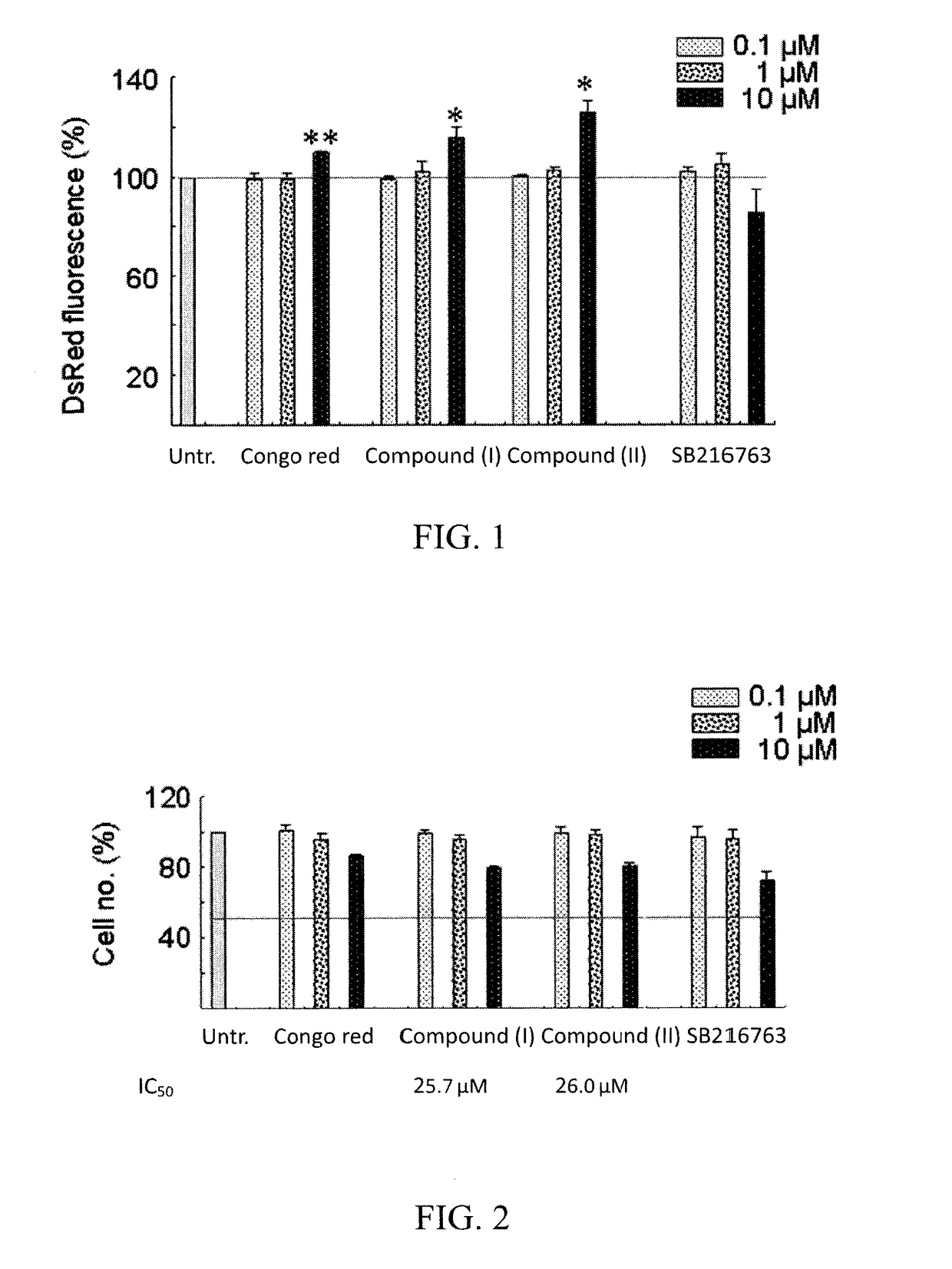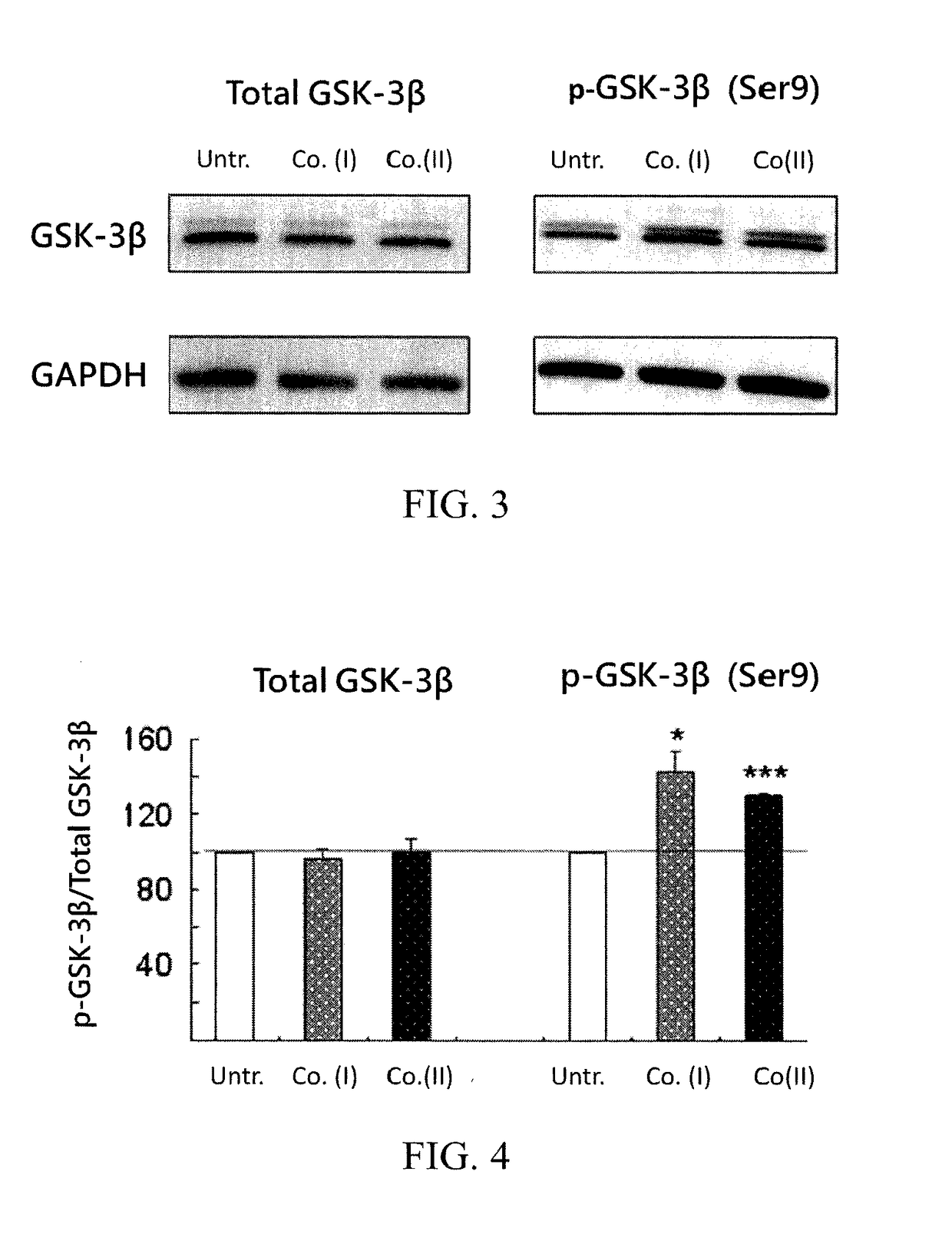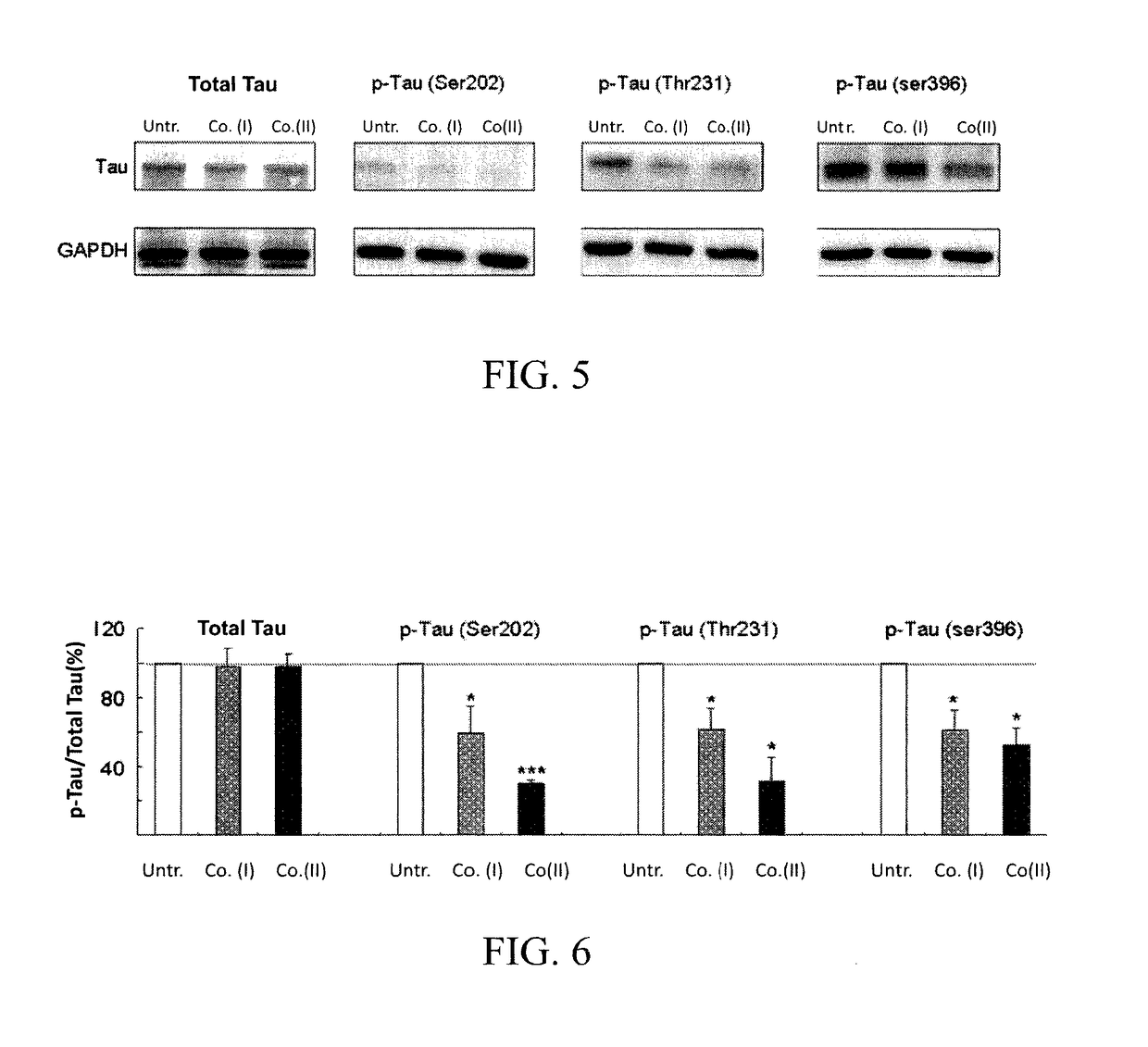Method for treating tau-associated diseases
a tau-associated disease and treatment method technology, applied in the field of tau-associated diseases, can solve the problems of forming neurofibrillary tangles which disintegrate the microtubules of neurons, and progressive cognitive decline and memory loss, so as to reduce the hyperphosphorylation of tau protein
- Summary
- Abstract
- Description
- Claims
- Application Information
AI Technical Summary
Benefits of technology
Problems solved by technology
Method used
Image
Examples
embodiment 1
[Embodiment 1]—Evaluation of Inhibition of GSK-3β Activity
[0037]The inhibition ability of the quinoline derivatives represented by formula (I) (hereinafter compound (I)) and formula (II) (hereinafter compound (II)) were evaluated in the following paragraphs, wherein a known GSK-3β inhibitor SB216763 (Product No. S3442, Sigma) (compound (III)) serves as a positive control.
[0038]GSK-3β kinase activity was measured in the presence of the tested compounds (I) and (II) using ADP-Glo™ Kinase Assay system (Promega). Recombinant human GSK-3β (Product code V1991, Promega) was used as the enzyme source, and the GSK-3β substrate was derived from human muscle glycogen synthase 1 peptide (YRRAAVPPSPSLSRHSSPHQ(pS)EDEEE) which corresponded to a region of glycogen synthase that was phosphorylated by GSK-3β. Reactions were performed at 30° C. for 30 minutes in the 25 μL mixture that contained 25 μM ATP, 0.2 mg / mL GSK-3β substrate, 1 ng of GSK-3β, and serial dilutions of compound (I), compound (II), ...
embodiment 2
[Embodiment 2]—Evaluation of Inhibiting Hyperphosphorylation of Tau Protein
[0041]We used HEK-293 human cells expressing a DsRed-tagged proaggregation mutant (ΔK280) of the C-terminal repeat domain of tau (tauRD-Gln244-Glu372 of the longest tau441 isoform). The recombinant tauRD-DsRed construct was under the control of a hybrid human cytomegalovirus (CMV) / TetO2 promoter that can be induced by adding doxycycline. The Tet-On ΔK280tauRD-DsRed293 cells were grown in medium containing blasticidin (5 μg / mL) and hygromycin (100 μg / mL) and were used for the following evaluation.
[0042]TauRD-DsRed 293 cells were plated into 96-well plates, grown for 24 h, and treated with 0.1, 1, 10 μM of congo red (a known tau aggregation inhibitor), compound (I), compound (II), and compound (III) (SB216763) for 8 h. Then doxycycline (Dox; 1 μg / mL) was added for 3 days and DsRed fluorescence was assessed using a high content analysis system (HCA) system (ImageXpressMICRO, Molecular Devices).
[0043]According to...
embodiment 3
[Embodiment 3]—Evaluation of Inhibiting Hyperphosphorylation of Tau Protein
[0045]We used human neuroblastoma cells (SH-SY5Y) expressing a DsRed-tagged proaggregation mutant (ΔK280) of the C-terminal repeat domain of tau (tauRD-Gln244-Glu372 of the longest tau441 isoform). The recombinant tauRD-DsRed construct was under the control of a hybrid human cytomegalovirus (CMV) / TetO2 promoter that can be induced by adding doxycycline. The Tet-On ΔK280 tauRD-DsRed SH-SY5Y cells were grown in medium containing blasticidin (5 μg / mL) and hygromycin (100 μg / mL) and were then used for the following evaluation.
[0046]The expression levels of phosphorylated GSK-3β (p-GSK-3β, the non-active GSK-3β) and phosphorylated tau protein (p-tau) in cells were examined in the present embodiment for evaluating the ability of compound (I) and compound (II) for inhibiting hyperphosphorylation of tau protein. In order to examine the expression levels of p-GSK-3β and p-tau, western blotting analysis was applied wit...
PUM
| Property | Measurement | Unit |
|---|---|---|
| tau aggregation | aaaaa | aaaaa |
| catalytic activities | aaaaa | aaaaa |
| concentration | aaaaa | aaaaa |
Abstract
Description
Claims
Application Information
 Login to View More
Login to View More - R&D
- Intellectual Property
- Life Sciences
- Materials
- Tech Scout
- Unparalleled Data Quality
- Higher Quality Content
- 60% Fewer Hallucinations
Browse by: Latest US Patents, China's latest patents, Technical Efficacy Thesaurus, Application Domain, Technology Topic, Popular Technical Reports.
© 2025 PatSnap. All rights reserved.Legal|Privacy policy|Modern Slavery Act Transparency Statement|Sitemap|About US| Contact US: help@patsnap.com



